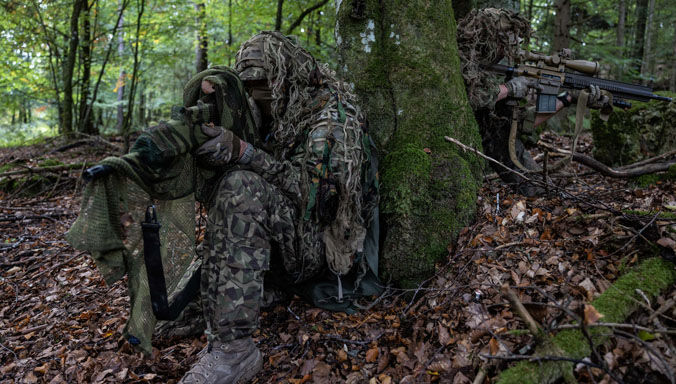Download NATO’s broadcast-quality video content free of charge

Log in
NATO MULTIMEDIA ACCOUNT
Access NATO’s broadcast-quality video content free of charge

Check your inbox and enter verification code
You have successfully created your account
From now on you can download videos from our website
Subscribe to our newsletter
If you would also like to subscribe to the newsletter and receive our latest updates, click on the button below.
Enter the email address you registered with and we will send you a code to reset your password.
Didn't receive a code? Send new Code
The password must be at least 12 characters long, no spaces, include upper/lowercase letters, numbers and symbols.
Your password has been updated
Click the button to return to the page you were on and log in with your new password.
Interoperability: connecting forces
Updated: 11 April 2023
How do the many countries in an alliance like NATO work effectively together in joint operations? Interoperability is what helps all the pieces fit together and run smoothly, and NATO has been striving to improve the ability of NATO forces to work together since the Alliance was founded in 1949.
NATO defines "interoperability” as the ability for Allies to act together coherently, effectively and efficiently to achieve tactical, operational and strategic objectives. Specifically, interoperability enables forces, units and/or systems to operate together, allowing them to communicate and to share common doctrine and procedures, along with each other’s infrastructure and bases. Interoperability reduces duplication, enables pooling of resources and produces synergies among all Allies, and whenever possible with partner countries.
Components
Interoperability does not necessarily require common military equipment. What is important is that equipment can share common facilities and is able to interact, connect and communicate, exchange data and services with other equipment.
Interoperability supports the implementation of NATO initiatives through multiple dimensions:
- technical (including hardware, equipment, armaments and systems),
- procedural (including doctrines and procedures),
- human (including terminology and training) and
- information (as a critical transversal element).
Mechanisms
Interoperable solutions can only be achieved through the effective employment of standardization, training, exercises, lessons learned, demonstrations, tests and trials.
By strengthening relationships with the defence and security industry and by using open standards to the maximum extent possible, NATO is pursuing interoperability as a force multiplier and a streamliner of national efforts.
Evolution
NATO militaries have achieved a high level of interoperability through decades of joint planning, training and exercises. More recently, Alliance members have put their interoperability into practice and developed it further during joint operations and missions in the Balkans, the Mediterranean, Afghanistan, Libya and elsewhere. These operations have also enabled NATO’s partner countries to improve interoperability with the Alliance.
Furthermore, over the years the Alliance has developed specific programmes to enhance interoperability, such as the Connected Forces Initiative (CFI). The aims of these programmes are for the Alliance and Allies to have a coherent set of deployable, interoperable and sustainable forces equipped, trained, exercised and commanded to operate together and with partners in any environment.


